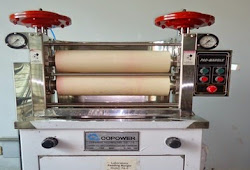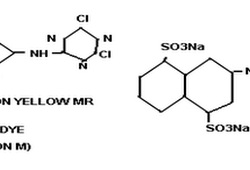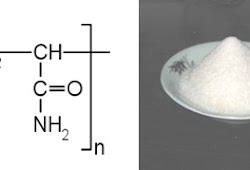Now You Know Dyeing of Cotton Material with Reactive Dyeing by Using Alkaline Buffer Solution
Friday, 25 May 2018
Edit
Dyeing of Cotton Material with Reactive Dyeing by Using Alkali Buffer Solution
G.Anbalagan
M Tech Department of Textile Chemistry
SSM College of Engineering
Komarapalayam – 638183, Ind
Email: pgpanbalagan@gmail.com
Mobile: +919965179080
&
Mr.P.Maheswaran M.Tech
Assistant Professor, Department of Textile Chemistry
SSM College of Engineering
Komarapalayam-638183, India
M Tech Department of Textile Chemistry
SSM College of Engineering
Komarapalayam – 638183, Ind
Email: pgpanbalagan@gmail.com
Mobile: +919965179080
&
Mr.P.Maheswaran M.Tech
Assistant Professor, Department of Textile Chemistry
SSM College of Engineering
Komarapalayam-638183, India
Abstract
Reactive dyes are very big boon to Textile industry due to ease of application and also due to good fastness properties. Cotton fibers are negatively charged and Reactive dyes are also negatively charged, due to that both repels each other and forms Zeta potential when immersed in water. In order to overcome this problem huge quantities of salt are used for exhaustion of dyestuffs. After the dye exhaustion, fixation is very important. In the fixation process huge amount of alkalis like soda ash and caustic soda were used. These alkalies are generating more effluent load. During dyeing the alkali dosing also create more leveling problem on critical shades like turquoise and royal shades.
In this present study, the use of multi function buffer solution as a replacement of soda ash and caustic soda will be investigated. The use of buffer solution as fixation agent will generate less effluent load, and produce the good quality fabric in critical shades. In that reactive dyeing buffer solution fixation process less dye hydrolyzation occurs. So in the effluent treatment the effluent color can be easily removed.
In this study reactive dyeing process by conventional method and by using buffer solution will be carried out and are going to be analyzed in the terms of color strength, fastness, effluent load, fabric quality, etc.
Introduction
In reactive dye a chromospheres contain a substituent that reacts with the substrate. Reactive dyes have good fastness properties owing to the bonding that occurs dyeing. Reactive dyes are most commonly used in dyeing of cellulose like cotton or flax, but also wool is dye able with reactive dyes.
Reactive dyeing is the most important method for the coloration of cellulose fiber. Reactive dyes can also be applied on wool and nylon; in the latter case they are applied under weakly acidic conditions. Reactive dyes have a low utilization degree compared to other types of dyestuff, since the functional group also bond to water, creating hydrolysis.
Reactive dyes are very big boon to Textile industry due to ease of application and also due to good fastness properties. Cotton fibers are negatively charged and Reactive dyes are also negatively charged, due to that both repels each other and forms. Zeta potential when immersed in water. In order to overcome this problem huge quantities of salts are required to neutralize the Zeta potential to favor exhaustion of dyestuffs. Salts are more harmful to environment and generating more effluent load.
Methodology:
Selection of materials and dyes
↓
Prepare the cotton fabric for dyeing
↓
Dyeing of cotton material in conventional method and Alkali plus method by using Exhaust method
↓
Compare Shade Alkali Plus method dyed sample with conventional method dyed sample
↓
Test the Alkali plus dyed samples (Washing fastness, Rubbing fastness, Light fastness and Color deference etc.)
↓
Test the Effluents for Alkali Plus method and Conventional method and compare the test results (pH, TDS, COD, BOD and etc.)
↓
Prepare the cotton fabric for dyeing
↓
Dyeing of cotton material in conventional method and Alkali plus method by using Exhaust method
↓
Compare Shade Alkali Plus method dyed sample with conventional method dyed sample
↓
Test the Alkali plus dyed samples (Washing fastness, Rubbing fastness, Light fastness and Color deference etc.)
↓
Test the Effluents for Alkali Plus method and Conventional method and compare the test results (pH, TDS, COD, BOD and etc.)
SELECTION OF MATERIAL
Cotton
Cotton fiber is a cellulosic fiber. It has worldwide popularity for its variety of use. Cotton fiber is the most used fibers for producing various types of fabric through all over the world. Cotton Fabrics are comfortable to wear than the other fibers product. It is comfort to wear in all the season.
Like all the textile fibers, cotton has its own physical and chemical properties which are required to know for better processing in spinning, weaving, knitting, dyeing, printing as well as finishing.
Characteristics of Cotton
Cotton, as a natural cellulosic fiber, has a lot of characteristics, such as;
- Comfortable Soft hand
- Good absorbency
- Color retention
- Machine-washable
- Dry-cleanable
- Good strength
80 - 90% | Cellulose |
6 - 8% | Water |
0.5 - 1% | Waxes and fats |
0 - 1.5% | Proteins |
4 - 6% | Hemicelluloses and pectin’s |
1 - 1.8% | Ash |
Knitted fabrics are produced by knitting technique. Knitting is the art of constructing fabric by intermeshing of yarn loops by some knitting elements.
The knitted fabric has more water absorbency and good extensibility. The knitted fabrics are most comfortable to wear. Mostly all type of sports dress are prepared by the knitted fabrics.
SELECTION OF DYES
Reactive Dyeing
The reactive dyes are among other dyes in that they have reactive system in the dye structure. These reactive systems are covalently bonded to the substrate that is the dye and the fiber substrate from a bond of shared electrons. As the energy required splitting the bond is of the same order as that required splitting carbon carbon double bond hence high degree of wet fastness observed with these dyes.
Chemistry of reactive dyeing
Any reactive group that is capable of reactive with sites in the fiber such as OH group, in cotton fiber is the potential reactive system. Reactive dyes for cotton dyeing are of two types:
- Nucleophilic substitution reaction
- Nucleophilic addition reactions
These reactions occur due to the attraction of a electron deficient carbon atom (present in the reactive dye) for the lone pair of electron on the nucleophilic (fiber). This reactive centre on the carbon atom is activated by electron withdrawing group adjacent to it (usually SO2 or CO). The reactive carbon atom is attached to the leaving group, usually halogen, sulphato or quaternary nitrogen.
2. Nucleophilic addition reaction:
The general of due containing polarized, unsaturated C=C double bond with nucleophilie can be considered to be a 1,2-trans addition. The double bond is necessarily activated by the presence of electron-withdrawing substituent such as a carbony1 or sulphony1 group. The reaction of a viny1 sulphone dye.
Properties of Reactive Dyes:
- The reactive dyes, on account of the sulphonic acid groups in their molecules, are readily soluble in water.
- Unlike direct dyes, the reactive dye molecules tend to be much less substantive to cotton and require much larger quantities of salt for exhaustion.
- These dyes, unlike any other class of dyestuff, react and combine chemically (forming covalent bonds) with cellulose. It is this characteristic that gives them the name “reactive dyes”.
- The highly reactive dye molecule, called the cold-brand type of reactive dye, has two chlorine atoms. Its reactivity can be reduced when desirable by blocking one of the reactive chlorine atoms, giving the hot-brand type of reactive dye.
- Textile materials colored with reactive dyes have moderate to good light fastness and washing fastness.
- Textile materials colored with reactive dyes have to be thoroughly rinsed and soaped. Reactive dyes can react with the hydroxyl groups of the water molecule to produce dye molecules with poor substantively for the fiber. In fact it is these molecules, which have to be removed by the washing of process, involving soaping at the boil and rinsing. If these hydrolyzed dyes’ are not removed, poor rubbing fastness will result.
- The formation of the covalent bond between the dye and fiber occurs under alkaline condition are both slightly acidic may affect textile materials colored with reactive dyes and result in some fading.
Sodium carbonate is an inorganic compound used as a moderate strength base. It is also called soda ash or washing soda. The chemical structure of sodium carbonate is Na2CO3, and its molar mass is 106.0 g/mol.
Sodium carbonate is an ionic compound- a sodium salt of carbonic acid, and is composed of two sodium cations (Na+) and a carbonate anion (CO3-). It has a crystalline heptahydrate structure. Sodium carbonate is a white crystalline powder with a density of 2.54 g/ml, and a melting point of 851 °C.
Sodium carbonate is a stable but hygroscopic solid and readily dissolves in water to form weakly acidic carbonic acid and the strong base, sodium hydroxide. Thus, the aqueous solution of Na2CO3 is overall a strong base.
Sodium carbonate is very essential auxiliaries in reactive dyeing. When as much exhaustion of dye into the material has take place, add the required of dissolved sodium carbonate. Sodium carbonate makes covalent bonding dyes and fibers.
Related:
NEW ALKLAI PLUS
New alkali plus is used as buffering agent in order to control alkaline pH of the bath in dyeing cotton and other cellulosic textile substrates with reactive dyes and also you can u new alkali plus in pretreatment, washing, printing where soda is using according to below table.
It is not a by-product, it’s the main ensured consistent quality.
Polycarboxylate Polyacrylic Base
- Polycarboxylate polyacrylic base are composition of inorganic buffered alkalies.
- Important Polycarboxylates are homopolymers of acrylic acid which are generally used as sodium salt.
- The various polycarboxylates are distinguished by the monomers used for their preparation acrylic acid and their molecular weight.
- In the homopolymers are designated by codes consisting of the corresponding abbreviations.
- Its free from caustic soda alkali
- Higher pH range 7.5-11.8
- It is a clean pure white power
- Longer storage stability
- No need of sodium bi carbonate in the dye bath as an additional buffer
- Can shorten the dye cycle time by dosing this alkali in a shorter profile
- Idea to dose this alkali in the dye bath at 40c hence reduce the longer fixation time and save energy
- No risk of unlevel dyeing, thanks to the gradual raise in pH at higher temperature
- Reduce wash 0ff cycle and improve wash fastness due to the less hydrolysis of dyes
New alkali plus is applied with bifunctional reactive dyes and vinlysulphones as follows:
Soda ash | New alkali plus |
10gms/lit | 1.0gms/lit |
15gms/lit | 1.5gms/lit |
20gms/lit | 2.0gms/lit |
25gms/lit | 2.5gms/lit |
30gms/lit | 3.0gms/lit |
Most popular and common method for dyeing and it’s also some time referred as exhaust dyeing. This process also called exhaust the dye molecules solely gets transferred from a comparatively large value dye bath to the substrate or material that is dyed. The dye is mean to exhaust from dye bath to the substrate.
There are three general three types of batch dyeing machines. The first type is the one where there is circulation of fabric. The second type one where dye bath liquor gets circulated. The third type where both bath liquor and material to be dyed gets circulated.
 |
| Fig: Soft flow dyeing machine |
DYEING PROCESS
The knitted fabric dyed by using the soft flow dyeing machine in exhausted method. This is more suitable for the knitted fabrics.
- First they carried out the pretreatment process like combine scouring and bleaching process for remove impurities, increase the whiteness and absorbency.
- Then the set dye bath and the dye bath chemicals and required amount of salt.
- After the two cycle the add the dyes solution in the dosing method
- Based on depth of shade the exhaustion time will be allowed
- After the exhaustion to add the alkali solution is added in dosing method. Based on the depth the alkali amount is added. This alkali is used to maintain the pH during fixation
- Then the fixation is carried. Then in after treatment warm wash, neutralization and soaping process are carried out for remove the un fixed dyes.
1. Washing Fastness
2. Rubbing fastness
3. PH of the fabric
4. Color fastness to light
5. Color difference
6. Effluent load nature: (WATER TESTING)
- COD
- BOD
- TDS
- Chlorides
- Carbonate
- Bi carbonate
We calculate the upraising technology in the processing industry improves a way to enhance the quality of the dyed material. The increase in TDS due to the addition of salt and various chemicals was reduced by Alkali Buffer dyeing was implemented in processing of knitted fabric and we achieved dyeing result. The Alkali buffer dyeing ability to a maximum extract along with on eco-friendly approach. The fastness properties of the material are found to be certainly equal to the normal dyeing. Reduce the effluent treatment cost and achieve the shade matching and the level dyeing.
Reference
- Jone Shore., Colorants & Auxiliaries, Wiley and Sons Ltd, New York, Volume I &II
- Shenai V.A., Organic Textiles Chemicals, Sevak publication, Bombay
- Alenka Ojstrsek., Ales Doliska., and Darinka Fakin “ Analysis of Reactive Dyestuffs and Their Hydrolysis by Capillary Electrophoresis – University of Maribor, Smetanova 17,SI-2000 Maribor, Slovenia
- Vaidya A.A, Chemistry of Textile Auxiliaries, Wheeler Publishing New Delhi, 1999
Sumber http://textilelearner.blogspot.com







